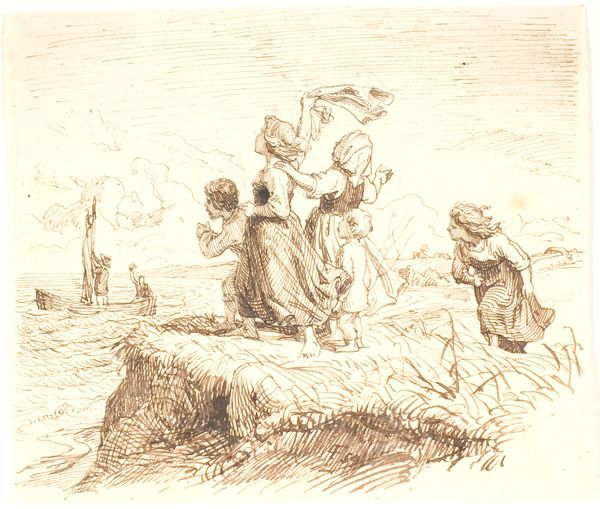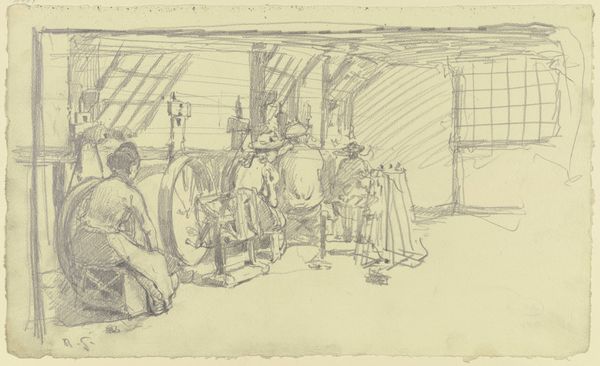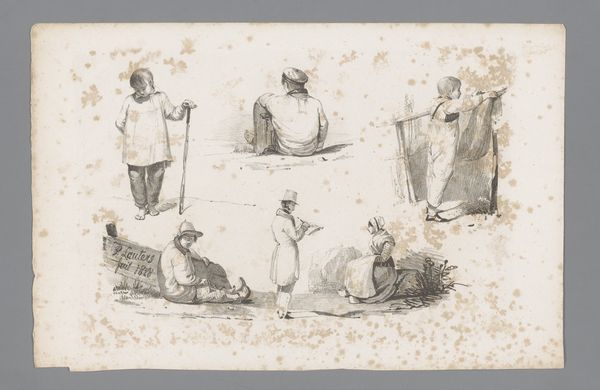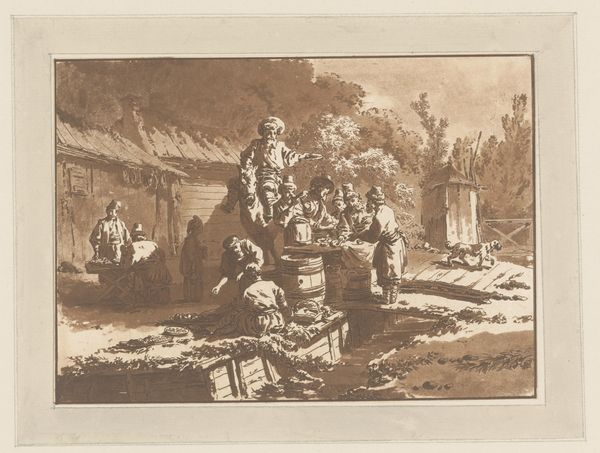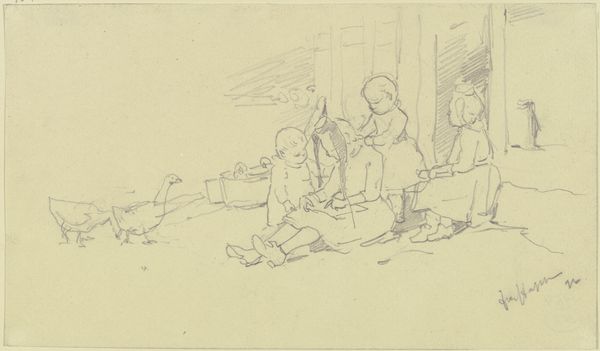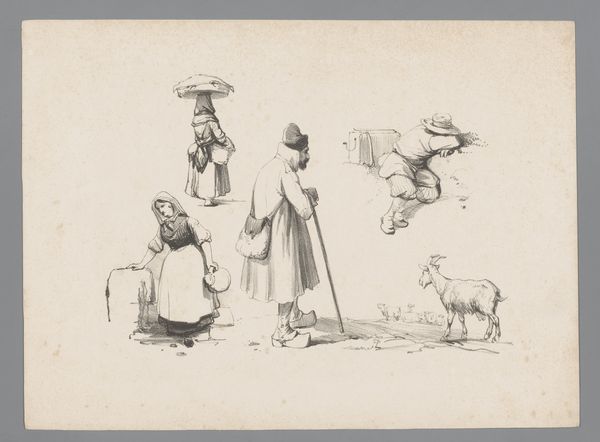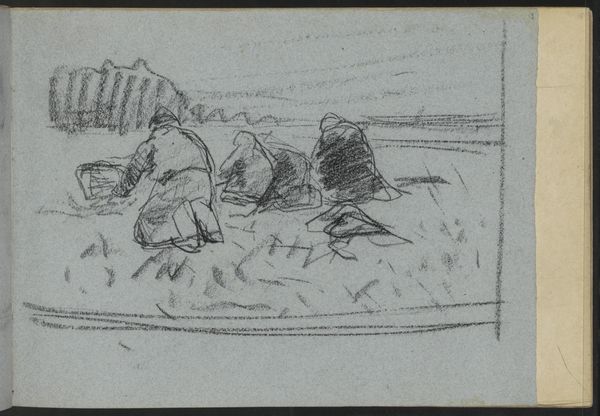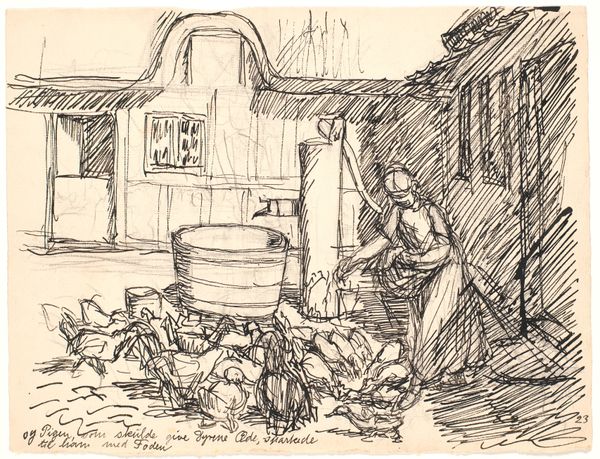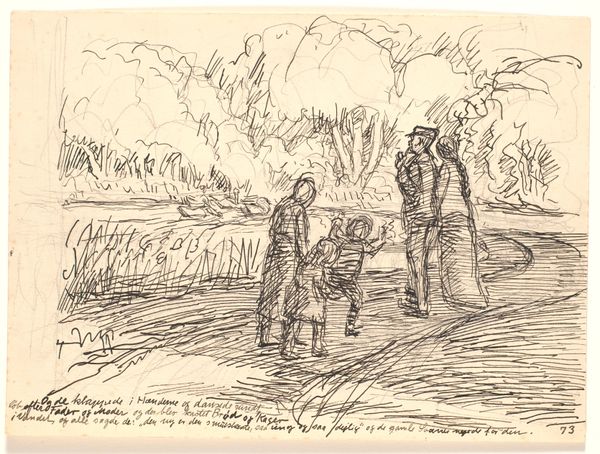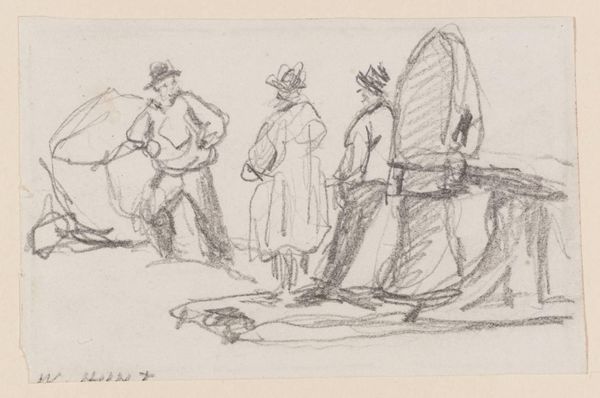
drawing, print, gouache, plein-air, paper, pencil, graphite
#
portrait
#
drawing
#
narrative-art
# print
#
impressionism
#
gouache
#
plein-air
#
landscape
#
figuration
#
paper
#
pencil
#
graphite
#
genre-painting
Dimensions: 193 × 239 mm
Copyright: Public Domain
Editor: Okay, so here we have Winslow Homer's "Children Sitting on a Fence" from 1874. It's a graphite and gouache drawing on paper, and it's incredibly evocative. I get a sense of a carefree summer day, but something about the somber gray tones mutes that joy. What do you see in it? Curator: Well, thinking historically, the post-Civil War era saw a rise in nostalgic imagery, particularly of rural life and childhood. How do you think Homer engages with or perhaps complicates that nostalgia here, given his compositional choices? The fact that the faces are obscured feels significant. Editor: That's interesting. I guess I assumed the obscured faces were more about a casual, almost snapshot-like quality, but thinking about the socio-political context, maybe it’s intentional, almost suggesting a loss of innocence after the war? Or a more generic, every-child kind of image. Curator: Exactly! The public consumption of imagery shifted drastically. Homer, as an artist who transitioned from illustration to painting, was acutely aware of how images functioned in the public sphere. Are these children idealized symbols or something else? Consider the racial and class tensions bubbling beneath the surface of that period. Are they deliberately omitted or subtly present? Editor: Wow, I didn’t consider the social commentary aspect at all. It changes the entire feel of the piece. Now I am thinking of labor issues and how some children needed to work while other were enjoying more carefree lives. Curator: It's a complex tension, and the lack of overt sentimentality may be a deliberate artistic choice, right? By focusing on the children's posture, their interactions, rather than identifiable features, he may have broadened the scope of the narrative. What's the takeaway here? Editor: The takeaway, at least for me, is not to take these seemingly simple images at face value, that they reflect and also respond to historical forces. There may be so much hidden underneath! Curator: Indeed. Art serves as a lens, reflecting and refracting its cultural moment. Looking closer reveals richer complexities.
Comments
No comments
Be the first to comment and join the conversation on the ultimate creative platform.
